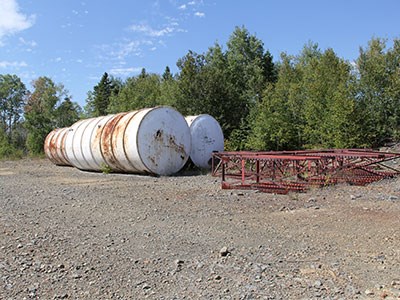After being lauded earlier this year for its Brownfield Strategy and Community Improvement Plan, the City of Greater Sudbury is at it again, amending the strategy to include rural sites, particularly old mine sites, in an effort to get them rehabilitated and ready for reuse.
The amendment would offer financial incentives to developers looking at rehabilitating brownfield sites—vacated properties that were previously used for commercial or industrial purposes—in rural areas. Currently, the strategy only applies to urban brownfield sites.
With the proposed amendment, if a new investor wanted to repurpose the land in a way that conforms to the city’s official plan, they could apply to the city for financial incentives to help them rehabilitate the hazards that remain on the property, in accordance with the rehabilitation standards that the province has set out under the Mining Act, explained Jason Ferrigan, a senior planner with the city.
“It’s taking, from our perspective, that next logical step and looking at other areas of the city with similar issues and seeing how we can use or adapt the tools that are available in the urban area to these other areas of the city,” Ferrigan said.
Under the current plan, to assist with the cost of remediation, the city offers four financial incentive programs: tax deferrals, landfill tipping fee rebates, planning and building permit fee rebates, and tax increment equivalent grants.
Properties have to meet certain criteria to qualify for the incentives, which apply at different points during the development cycle.
Calling the amendment an “exciting” initiative, Ferrigan noted that Sudbury is the first community in the province to propose this kind of approach for remediation issues associated with past mining practices.
In looking at the province’s Abandoned Mines Information System (AMIS) database, the city discovered it has roughly 323 sites, including active or inactive mines, as well as abandoned mines or mine hazards. By comparison, the city of Timmins has 167.
Ferrigan estimates Sudbury could have the largest number of sites in the province, but notes the type and variety vary.
Hazards vary depending on the stage of the mining activity. They could include trenches cut into rock or former mine sites that had full development and production.
Under today’s Mining Act, companies must have an approved mine site closure plan in place, as well as proof of financial means to complete that plan, before they can even open up a new mine.
Rules before the mid-1990s were not so stringent, and the city’s research showed that roughly 90 per cent of the sites fell outside closure plan boundaries.
That led researchers to look at Sudbury’s original 1978 regional official plan, to see where mines were located.
An overlay analysis further showed that at least 10 former sites lay outside the boundaries for the closure plans, which means the mines are not subject to any kind of rehabilitation according to any modern standard. It’s those sites in particular the city is hoping to target with its new amendment.
If approved by council and no appeals come forward, the incentives take effect this fall.
“It’s been a really exciting initiative for the city,” Ferrigan said. “We look forward to seeing what the results are in the fullness of time as soon as we get the policy approved and in place.




